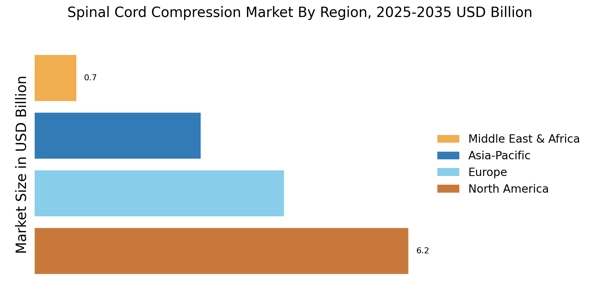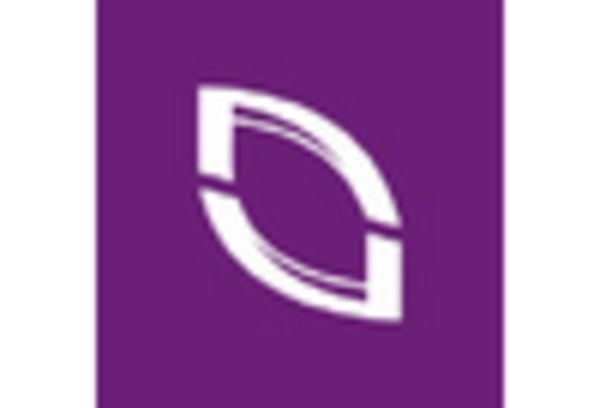Rising Incidence of Spinal Disorders
The Spinal Cord Compression Market is significantly influenced by the rising incidence of spinal disorders, which is becoming a pressing health concern. Conditions such as herniated discs, spinal stenosis, and degenerative disc disease are increasingly diagnosed, leading to a higher demand for treatment options. Recent statistics indicate that spinal disorders affect approximately 80% of individuals at some point in their lives, creating a substantial patient population in need of intervention. This growing prevalence is likely to drive the Spinal Cord Compression Market, as healthcare systems seek to address the needs of affected individuals through various treatment modalities.
Rising Awareness and Education on Spinal Health
The Spinal Cord Compression Market is significantly impacted by rising awareness and education regarding spinal health. Public health campaigns and educational initiatives are effectively informing individuals about the importance of spinal health and the potential consequences of neglecting spinal disorders. This increased awareness is leading to earlier diagnosis and treatment of spinal cord compression, which is crucial for improving patient outcomes. Data suggests that communities with active educational programs have seen a 20% increase in early intervention rates. As awareness continues to grow, the Spinal Cord Compression Market is likely to expand, driven by proactive patient engagement and timely treatment.
Technological Innovations in Surgical Procedures
The Spinal Cord Compression Market is experiencing a surge in technological innovations that enhance surgical procedures. Advanced techniques such as minimally invasive surgery and robotic-assisted surgeries are becoming more prevalent. These innovations not only reduce recovery times but also improve patient outcomes, which is crucial in a market where patient satisfaction is paramount. According to recent data, the adoption of these technologies has led to a 30% increase in successful surgical interventions for spinal cord compression. As healthcare providers continue to invest in cutting-edge technologies, the Spinal Cord Compression Market is likely to expand, driven by the demand for safer and more effective treatment options.
Growing Demand for Non-Surgical Treatment Options
The Spinal Cord Compression Market is witnessing a growing demand for non-surgical treatment options, reflecting a shift in patient preferences. Many individuals are seeking alternatives to invasive procedures, leading to an increase in the utilization of physical therapy, chiropractic care, and pain management techniques. Recent surveys indicate that approximately 60% of patients prefer conservative treatment options before considering surgery. This trend is likely to influence the Spinal Cord Compression Market, as healthcare providers adapt to meet the needs of patients who are increasingly inclined towards non-invasive therapies.
Increased Investment in Healthcare Infrastructure
The Spinal Cord Compression Market is benefiting from increased investment in healthcare infrastructure across various regions. Governments and private entities are allocating substantial resources to enhance healthcare facilities, particularly in the realm of neurosurgery and orthopedics. This investment is crucial for improving access to advanced treatment options for spinal cord compression. For instance, the establishment of specialized spinal centers has been linked to a 25% increase in patient referrals for surgical interventions. As healthcare infrastructure continues to develop, the Spinal Cord Compression Market is poised for growth, driven by improved access to care and enhanced treatment capabilities.


















Leave a Comment